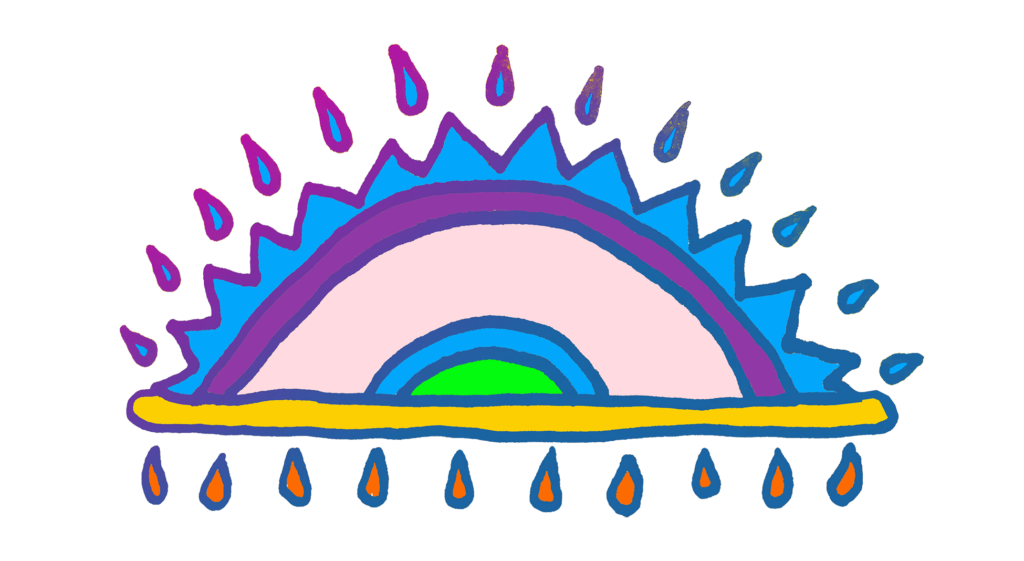
Understanding meditation colors and their meanings can transform your practice and your life. Becoming comfortable with sensing and connecting with colors while meditating is a way to move from being a beginner to someone with actual experience with spiritual energy. You can speed up your process by learning what the colors mean and how they work together. Each color has a very specific meaning and a role it plays in our meditative process. Connecting with a given color and meditating while connecting with it is a very powerful and often overlooked form of mediation.
Mediation is often advertised as a method to de-stress, find peace, and relax. Meditation does create space to relax and center one’s self, and meditating regularly can also help us find meaning in our lives and help develop a deeper spiritual connection. When discussing the subject of meditation, we often hear about guided meditations, paying attention to your breath, or mantras, or the use of affirmations (spoken or written words), and the general idea of ‘willing’ something into our lives. One aspect I haven’t heard a lot about is the importance of working with colors in meditation. By becoming familiar with how the colors work and incorporating them in your meditation practice and life in general, you can transition into a more participatory role, both while in meditation and in your life as a whole. To be quite frank, working with colors is probably one of the most underrated yet powerful ways to develop spiritually.
The color system we are going to explore I have worked with and helped develop over the last 15 years and is very similar to the traditional Hindu ‘yoga’ chakra color system. The ancient language Sanskrit (used in 1200 BC), translates the word chakra to mean ‘wheel’ or ‘circle’ (perhaps: ‘energy center’). Basically, chakras are understood to be energy points. However, regardless of the phrase used to reference these energetic points, there has been an understanding for many, many centuries that specific points in the human body correlate with different qualities of energy, and these qualities of energy each have a specific color.
When tracing back the yoga chakra colors, you will see the original system had only a few colors. Throughout history, the color system developed as humans developed to what has become accepted for the last few hundred years as six charka points. What has always made humans special is our ability to evolve. As we develop, how we relate to our energetic environment will continue to evolve.
To fully embrace where we are as humans in this new century, I think a much more fluid approach is needed when working with any system. The world around us is shifting and changing, and no doubt, on an energetic level, we are also evolving at a faster rate than ever before. This new color system considers the need for a much more conscious and actualized relationship to our evolution. It offers a ‘way in’ to be much more present and involved in our spiritual development.
When you are meditating or specifically working with colors (such as in healing work, energy work, etc.), it’s useful to know what the colors mean. This updated system is useful because it incorporates past spiritual teachings and includes up-to-date developments of human evolution. People I’ve been working with over many years, and I have collectively spent thousands of hours in mediation and engaged in energy work, exploring and learning how these colors work, in real-time, in real people’s lives.
It’s important to note, the process of sensing and exploring your own relationship to colors is as important or more so than reading about and cognitively understanding the meanings. The only way to grow and evolve is by doing: ‘learn and become by doing’ (which would be time spent meditating). As you learn about mediation, colors, and their meanings, it’s equally important to sense as deeply as possible how they feel to you. If, at first, there is nothing tangible happening, that is fine too. Go step by step and always honor your own experience as a crucial part of our process. It’s equally useful knowing what you’re not sensing as noticing what you are sensing.
Meditation colors and their meanings relate specifically to the energetic systems which affect our life. Each color has a meaning—each color centers around a function of our life. Starting from red, as the most basic level of existence, all the way up to white, which expresses self-awareness of who we are. All the colors in-between are the building blocks. This set of colors (in order) is RED, ORANGE, YELLOW, GREEN, BLUE, WHITE. This set of colors relates to our current state of existence. Our relationship with them mirrors who and how we are currently. These colors tend to be easier to connect.

There is a second set of colors that balance out this first set. These colors relate to how energy becomes available, develops, and evolves. These colors are less hierarchical but still express a directional movement starting from available energy, moving towards energy that embodies intention. This second set of colors (in order) is GOLD, CLEAR, SILVER, PURPLE, PINK, VIOLET. This set of colors relate to our current state of potential, our relationship to these colors mirror energetic potential and possibilities. These colors are more subtle and abstract, thus often less easy to sense.

Altogether the list of colors, in order are: RED, ORANGE, YELLOW, GREEN, BLUE, WHITE, GOLD, CLEAR, SILVER, PURPLE, PINK, VIOLET.

The first six colors map easily onto the human body and have meaning based on how our live’s function.
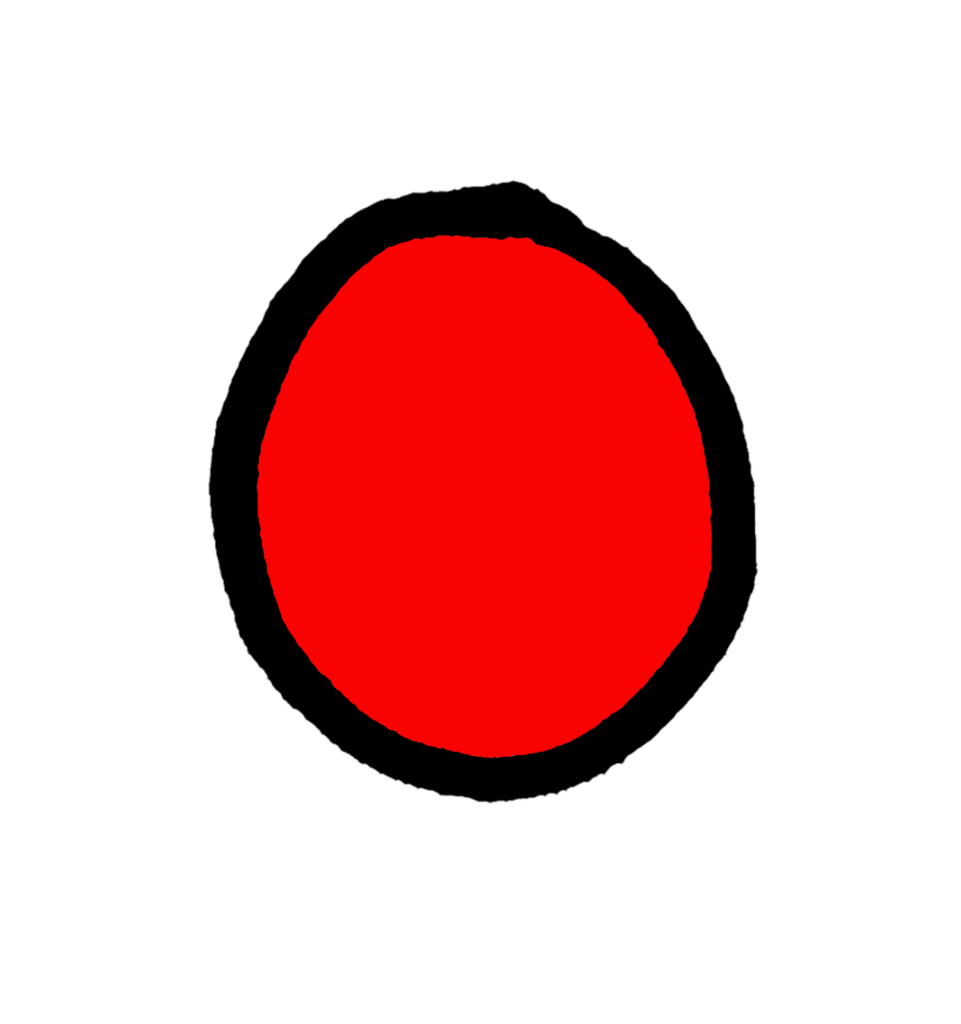
Red: the existence of our body.

Orange: sensing of our existence.

Yellow: experience of having a ‘self’
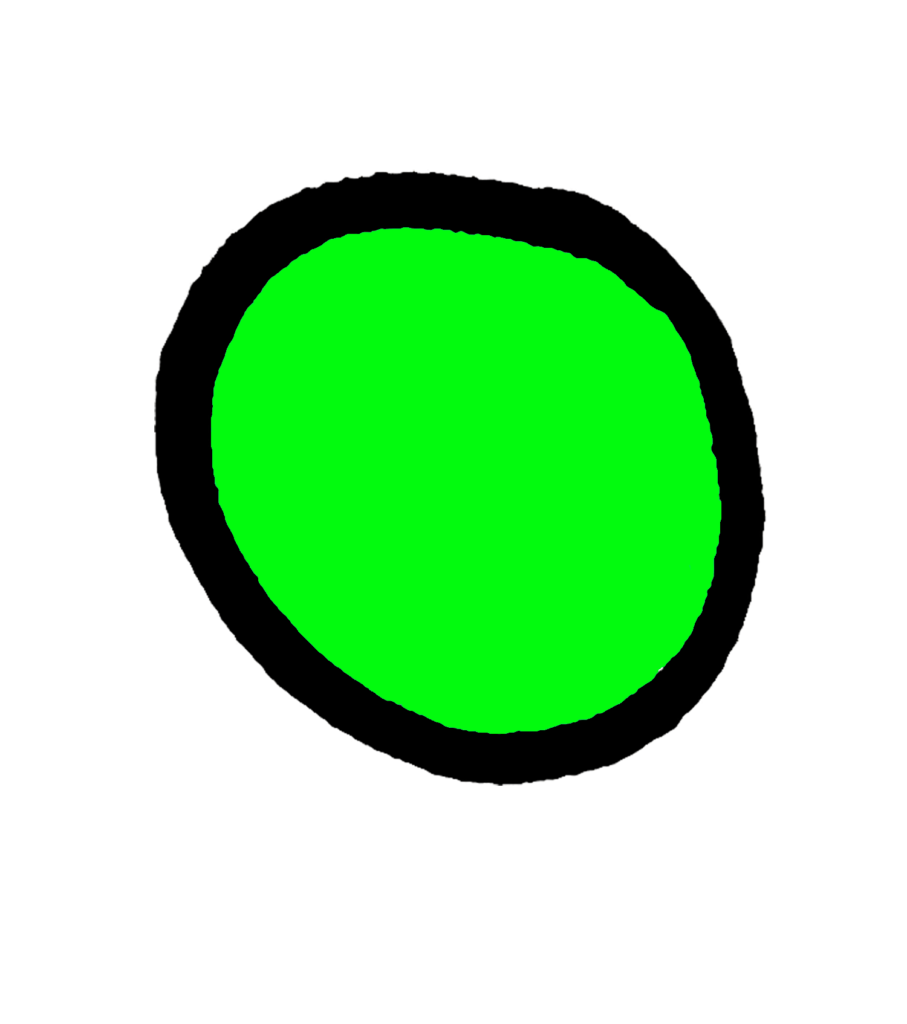
Green: experience of a community (work, family, etc)

Blue: experiencing a sense of meaning in your life

White: self-awareness and self-directed growth
They line up along the body like this:
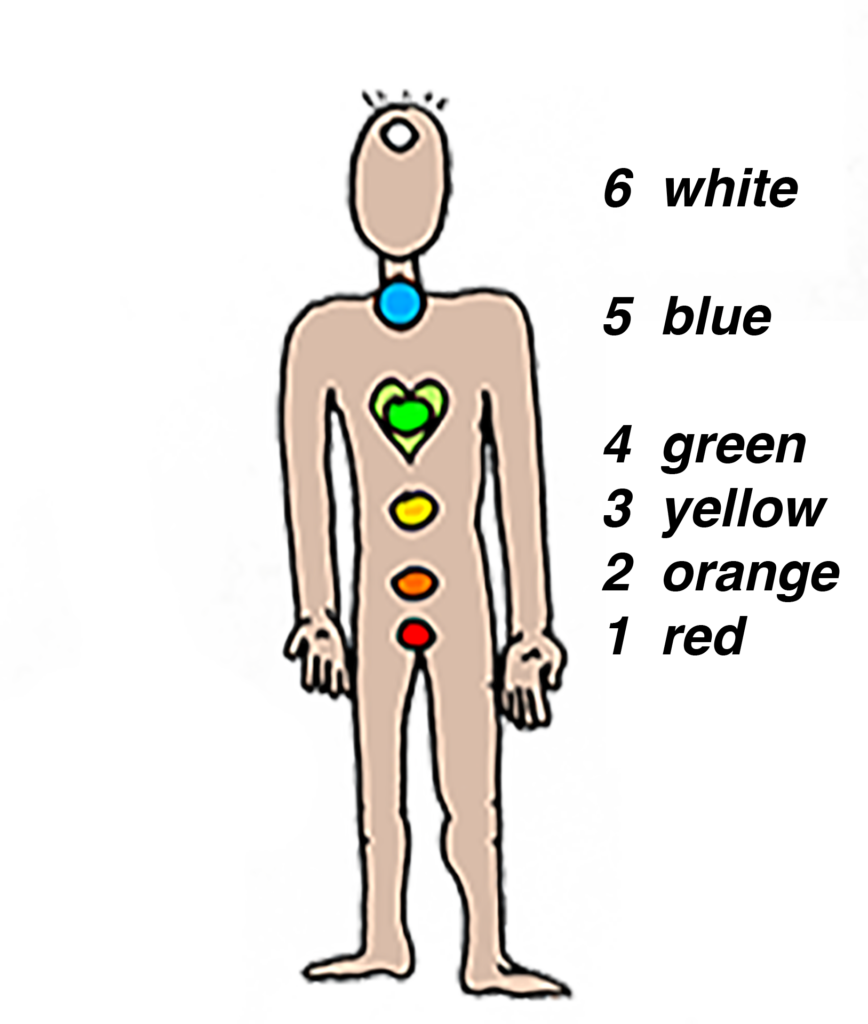
The second set of colors don’t map into the human body (although gold does make sense as connecting right above the crown of the head) and relates to how available energy flows to support the evolution of the first six colors. Note: although the image below shows the next six colors floating above the head, I don’t see them as specific as this. A better way to think about it is, each color in this set is an aspect of spiritual energy as a whole.
The crown charka is White and is at the top of the head. This is the sixth chakra for the physically connected energy points. When the crown chakra has enough energy flowing through it, it will be able to open. Once open, you can sense gold floating above your head. The rest of this set of colors can also be sensed in this same manner, right above the head. (It may make more sense if thought about as phases of the moon. The moon is, in fact, always whole, but depending on the time we can see and relate to it differently.)

gold: available energy (our connection to…)
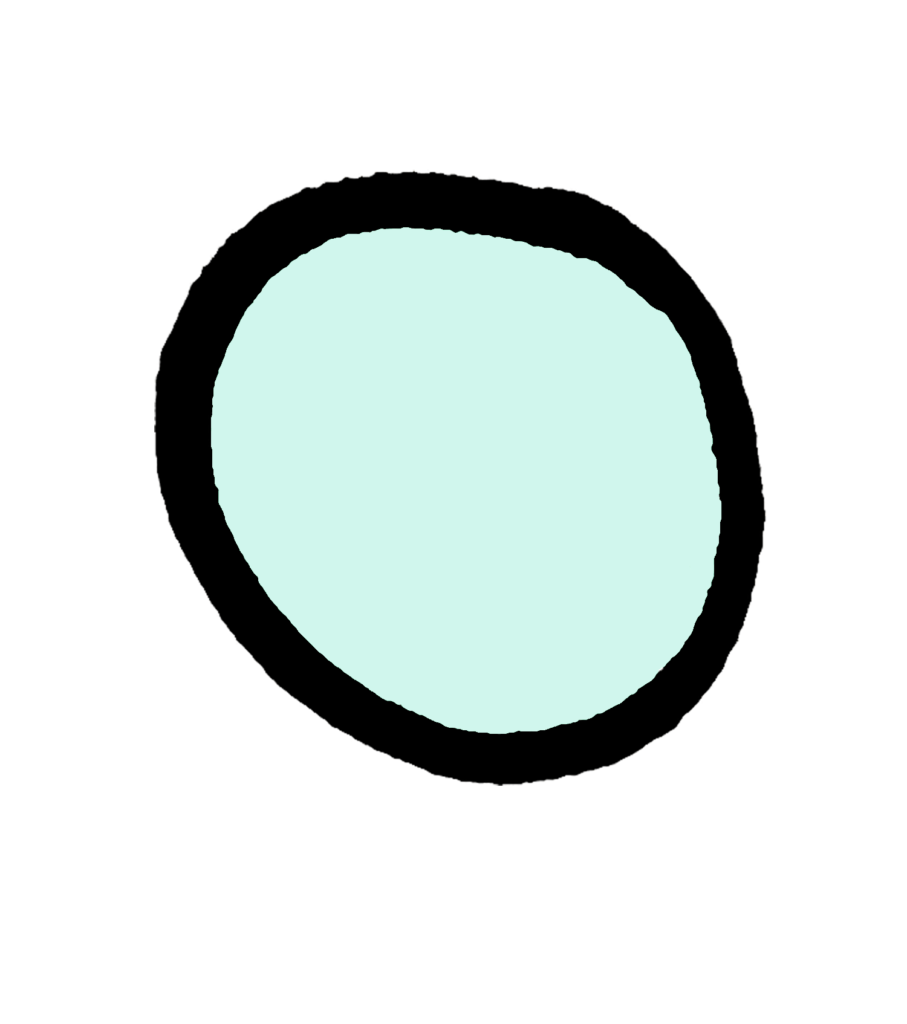
clear: free energy

silver: aware energy

purple: embodied energy
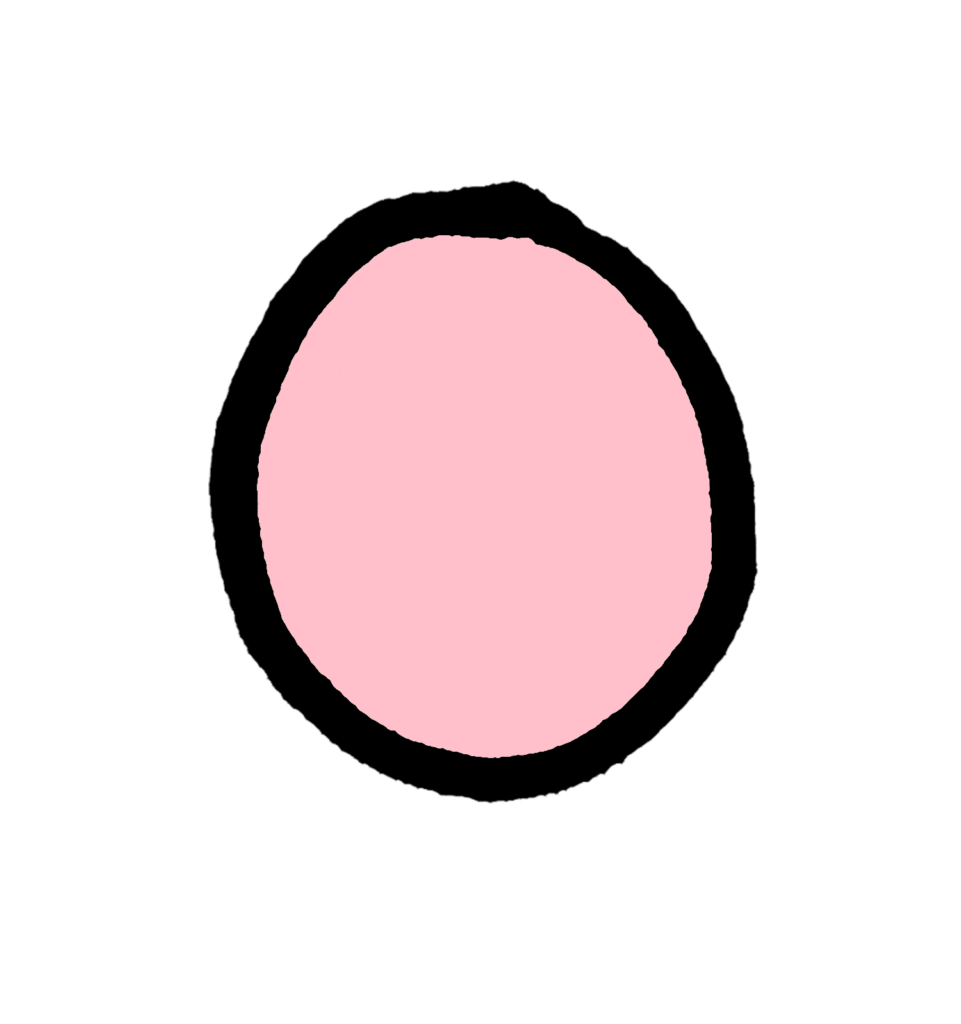
pink: engaged energy

violet: realized energy (available transformative energy)
The most pronounced connection with this energy when sensing during meditation would be through the crown of the head. Energy itself including all the aspects (colors), would be more like an aura surrounding our bodies. Energy is ever present and transcends time and space.
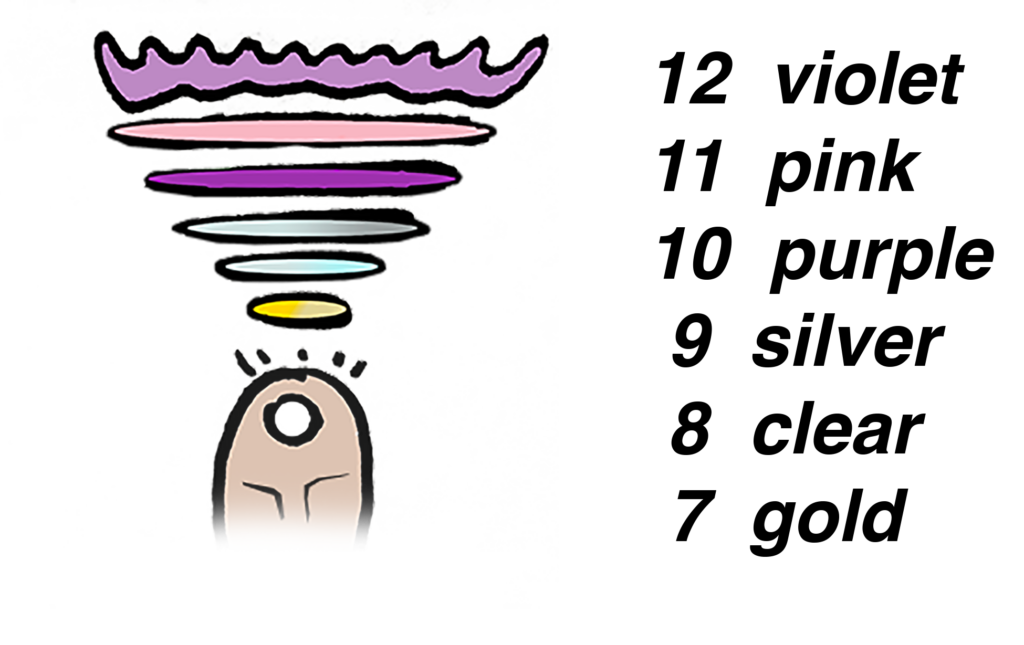
The above descriptions boil down meditation colors and their meanings to their simplest essence. In the next section, I will go into more detail to get to know each color better.
The first six colors relate to how we experience our lives:
- Red: The existence of our living body: our body is connected with life energy. This is similar to all life forms. Life is flowing through our bodies.
- Orange: Sensing of our existence. Orange is where we can feel our life circumstances and pay attention to our bodies and minds. This is a basic low level of sense awareness which is watching, sensing, and feeling. We can choose where and how we focus this awareness, similar to how we control our breathing and move our body. The more we are ‘aware’ of this sensing energy, the more we can grow yellow energy; for this to happen, orange and red need to have a happy symbiotic relationship. When orange and red are connected and listening to each other, they create fuel that blossoms into yellow, feeding yellow, allowing yellow energy to grow. Orange is the juncture point for raw energy (RED), to transform into a personalized sense of self (yellow). And then beyond, to green, blue, white.
- Yellow: Experience of having a ‘self’. This is where we are able to consciously and actively sense our bodies, minds, and actions as independent beings. This is the first stage where ‘identity comes into formation. Personal agency.
- Green: Experience of a community (work, family, etc.). Our sense of awareness extends beyond ourselves to include our ‘work’, hobbies, family, friends, and community. Green is located in the area of our heart and relates to self-love, love of others. When you are feeling sensations of love, usually you can feel this strongly in your heart area.
- Blue: Experiencing a sense of meaning in your life. We can sense the elements that make up our life, as connected and ordered in a way that creates a sense of higher meaning and flow. Blue is the energy that moves us beyond survival into ‘living’ energy. Empathy, generosity, forgiveness are expressed at this energy level.
- White: Self-awareness and self-directed growth. We see and understand ourselves, our lives, and our relationships. We can work with our consciousness and awareness in a self-aware manner, develop and evolve in a self-directed manner. White is a fully integrated sense of sense. This energy point is at the crown of the head and is the portal or juncture point to a direct connection with subtle energy. When we are connected with this energy point, we can sense and ‘understand’ subtle/spiritual energy. When White and Orange connect in a balanced manner to harness red, this is where true spiritual growth can happen.
The next six colors are aspects of energetic transformation and how it relates to us personally:
- gold: Available energy. We can connect with energy in a conscious manner and are open to the experience of the infinite quality of energy. (Being connected with this energy is the “spiritual” or “religious experience” feeling people have sometimes)
- clear: Free energy. We can connect with energy in a flowing manner. We can listen and follow energy (we don’t try to control or affect energy, a good physical example is dancing to music, your body ‘knows’ how to move with the music)
- silver: Aware energy. There is a sense of conscious connection with energy, our sense of knowing and understanding is linked with our energetic experience. (Your native language you ‘know’, if you become fluent with another language, you will ‘know’ this language also.)
- purple: Embodied energy. The sense of knowing is embedded with a physical sensation. ‘We know we know, and we can feel it’. (Think of the feeling when you hug someone you love and trust, you can ‘feel’ this experience usually, you ‘know’ you have a meaningful connection with them, and you can ‘feel’ it)
- pink: Engaged energy. Connecting with this type of energy gives a sense of purpose or intention. The ability to sense where and how energy is ‘wanting’ to move. (If you have ever walked a dog on a leash, you can feel where the dog wants to go, if it wants to stop and smell something, etc., you can feel it through the leash)
- violet: Realized energy. Energy in this phase is the catalyst for physical world development. This is where our thought structures can change, and we take action. This energy flows directly into the RED, providing the basic flow of life, and being. (How do you decide to lift your arm, the spark in between the intention and the movement is “violet” energy. How do you have a thought? The energy right before the actual thought is ‘violet’.)
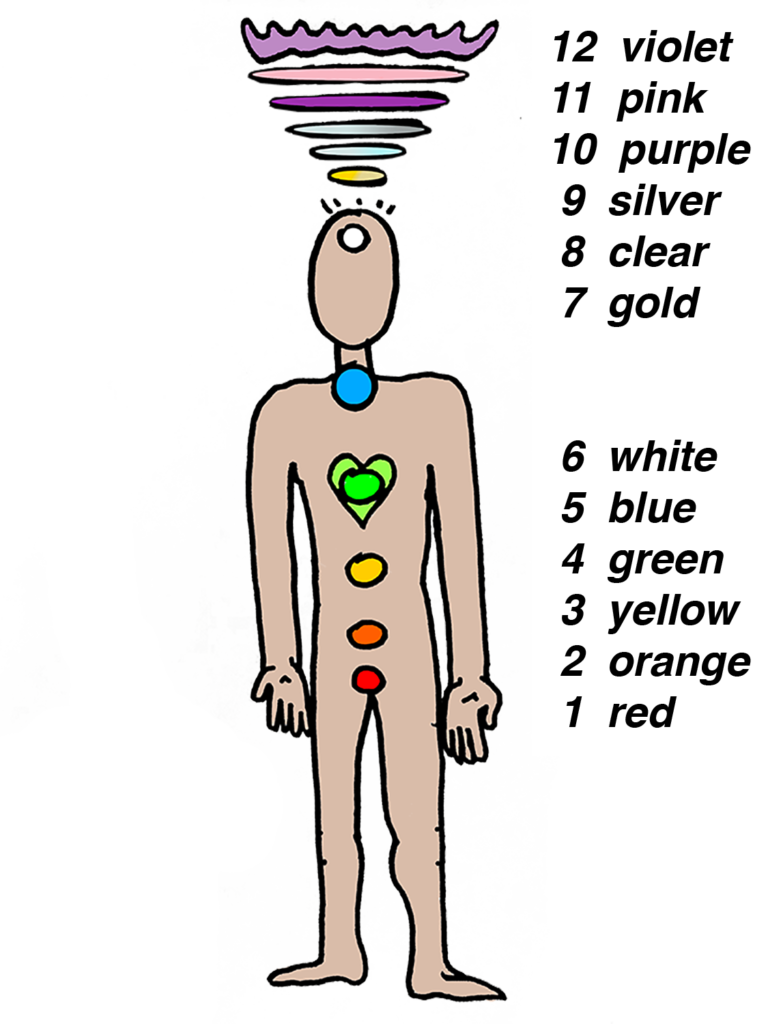
We just looked over all the colors’ order and roles and how they connect to us. Understanding how meditation colors and their meanings work together brings a larger next-level understanding of their meanings and why they are important. Also, gaining experience through connecting with them firsthand is needed to begin to internalize the understanding.
When you start out meditating and connecting with colors, your ability to sense anything at all may be minimal. That’s ok. By using this map and especially focusing on the first six colors, especially focusing on the first two colors (red, orange), you will begin to build an authentic relationship with your subtle body’s energetic system. I suggest connecting with these first two colors because they are the most grounding and often have the most resistance physically if we are just starting out with understanding meditation colors and their meanings.
There are a few simple ways to practice connecting with colors during your meditation practice. By connecting with meditation colors and their meanings in a somewhat structured manner, you can bring coherency to your practice by having something to focus on (the colors). Also, by having something to focus on that is not ‘thought’ based, your thinking mind relaxes, and your ‘experiencing’ mind is activated.
A few of the ways to work with colors. Here are six ways to work with colors during your meditation practice. Each consecutive exercise builds off of the previous exercise in complexity. Start from the simplest and move to the more complex operations. It’s probable you will do best by focusing on the first 1-3 exercise for the first few months or even a year. But everyone is different. See what exercises are engaging for you. That is always a good sign you are at the correct level of difficulty.
- Focus on one specific color (for starts, I recommend red or orange).
- during meditation, pay attention to colors that come to your attention. Even something like thinking of / seeing green grass during meditation.
- Move through the first six colors in a slow, steady tempo, giving your mind and body a chance to connect with each one.
- Doing a ‘color mediattion’, focusing on a color in your mind, and continue to watch it shift and change for the entire meditation period.
- Working with colors in combination of each other, ie moving through patterns or focusing on two or more at the same time. (Pre-selected combos)
- Sene a color pattern or combo and focus on it. (Self-directed combos)
It’s useful to note here…
Although each of the first six colors responds to a specific area of the body, I have always experienced and ‘felt’ each color throughout my whole body, not a specific area. Pay attention to how you are experiencing each color. It may resonate with a certain area of your body, you may feel very little, or it may be a full-body experience with each color (like I have mainly experienced). There is no right or wrong, just your own process to pay attention to and follow it. Your experiences will change and evolve as you develop.
Are colors healing?
Meditation colors and their meanings are healing. Connecting with them during meditation is a great way to begin to develop your ability to sense energy. Using meditation colors and their meanings is also useful to anchor your meditation practice. During your meditation practice listening to sense when a color connects with you helps to shift your “thinking” mind to an “experiencing” mind. An experiencing mind is a mind engaged correctly with a whole human experience of life. Connecting with colors, focusing on one or more colors, moving through them in order one by one, all these activities are exercises in breathing life in each energetic level of your life and helps to create flow between all these levels. For example, we need RED (physical embodiment of subtle energy) to be open, connected, and ‘listening’ to orange, as well as all the other colors. All the colors are connected like a mesh or energy lines. There is a strong connection between each consecutive color, but all the colors feed and inform all the other colors. By consciously connecting and working through the colors, you help develop each connection and bring self-aware consciousness to your energetic system. Using simpler words: by focusing on meditation colors and their meanings, you are helping to heal yourself, helping to align your energy, helping to unkink stuck energy and to integrate all the various energies in your system to help support you as a whole. The simple exercises above are ways to connect and engage with your energetic color points. Whenever you connect with these energy points, you are healing and developing your life.
What’s next?
By including meditation colors and their meanings in your life, over time, you will gain a more subtle understanding of how life works. The colors are somewhat like a map. There is definitely more in-depth learning with each color and how they relate with each other to be done, but this is a good start for a roadmap. By understanding and feeling each aspect of your life’s energy (which equals purpose and function), you will develop a more experienced overarching sense of life in general, specifically your own life and those around you. I personally mostly engage with colors from a sensing and watching position, seeing what is coming to me, and how they feel, and how they alter and change in time. By being able to watch energy move, shift, and change without attempting to control or affect it, you can have a clearer understanding of what is happening and what is wanting to happen, and you can develop, over time, a type of ‘listening’ strength which will serve you very well. Listening strength, when actualized to a high degree, turns into ‘active’ listening. It’s an interesting and powerful form of ‘passive’ power, a power of ‘allowing’. Listening and connecting with colors is a great way to develop this very powerful type of listening energy.



